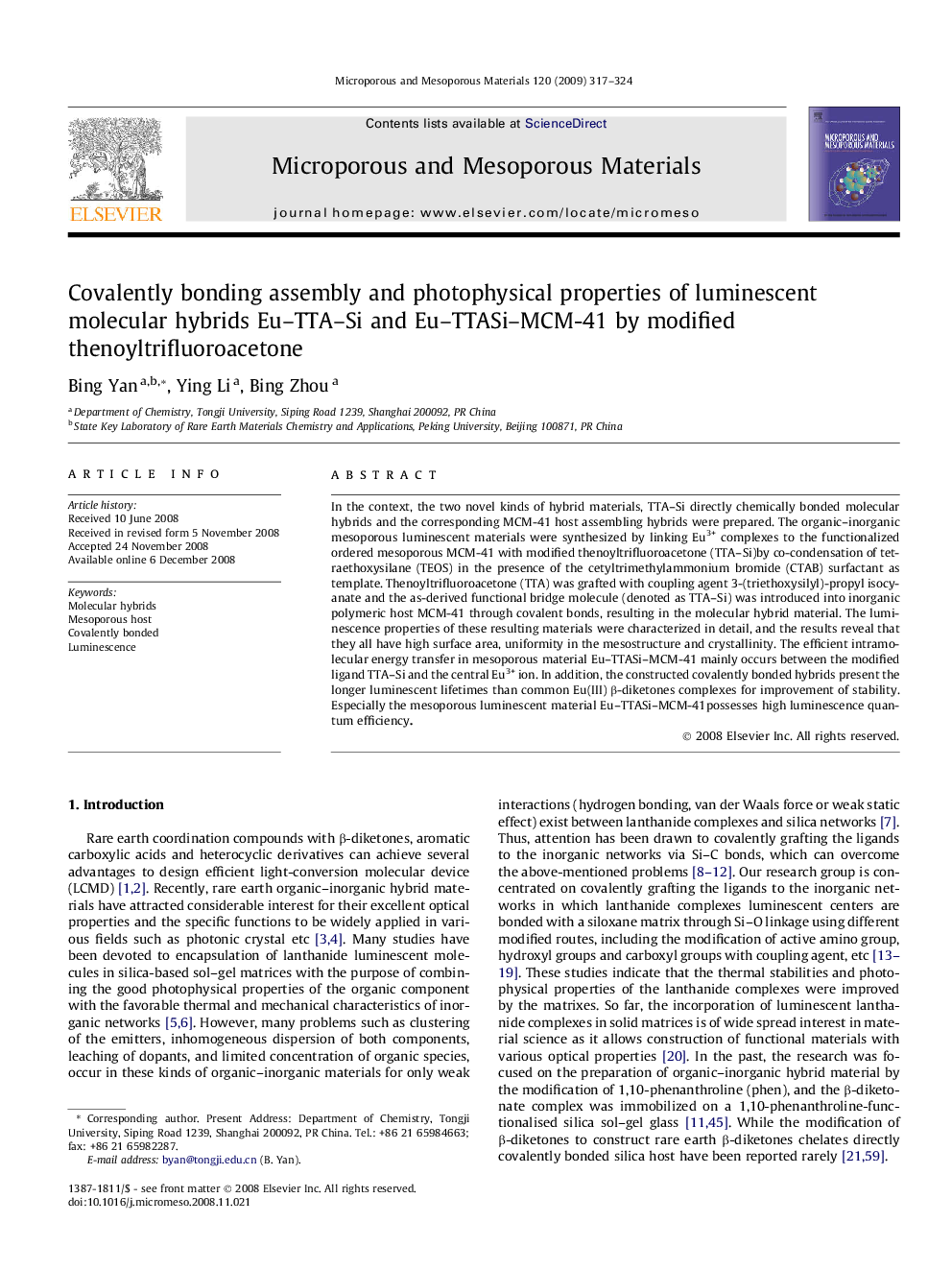| Article ID | Journal | Published Year | Pages | File Type |
|---|---|---|---|---|
| 76161 | Microporous and Mesoporous Materials | 2009 | 8 Pages |
In the context, the two novel kinds of hybrid materials, TTA–Si directly chemically bonded molecular hybrids and the corresponding MCM-41 host assembling hybrids were prepared. The organic–inorganic mesoporous luminescent materials were synthesized by linking Eu3+ complexes to the functionalized ordered mesoporous MCM-41 with modified thenoyltrifluoroacetone (TTA–Si) by co-condensation of tetraethoxysilane (TEOS) in the presence of the cetyltrimethylammonium bromide (CTAB) surfactant as template. Thenoyltrifluoroacetone (TTA) was grafted with coupling agent 3-(triethoxysilyl)-propyl isocyanate and the as-derived functional bridge molecule (denoted as TTA–Si) was introduced into inorganic polymeric host MCM-41 through covalent bonds, resulting in the molecular hybrid material. The luminescence properties of these resulting materials were characterized in detail, and the results reveal that they all have high surface area, uniformity in the mesostructure and crystallinity. The efficient intramolecular energy transfer in mesoporous material Eu–TTASi–MCM-41 mainly occurs between the modified ligand TTA–Si and the central Eu3+ ion. In addition, the constructed covalently bonded hybrids present the longer luminescent lifetimes than common Eu(III) β-diketones complexes for improvement of stability. Especially the mesoporous luminescent material Eu–TTASi–MCM-41possesses high luminescence quantum efficiency.
